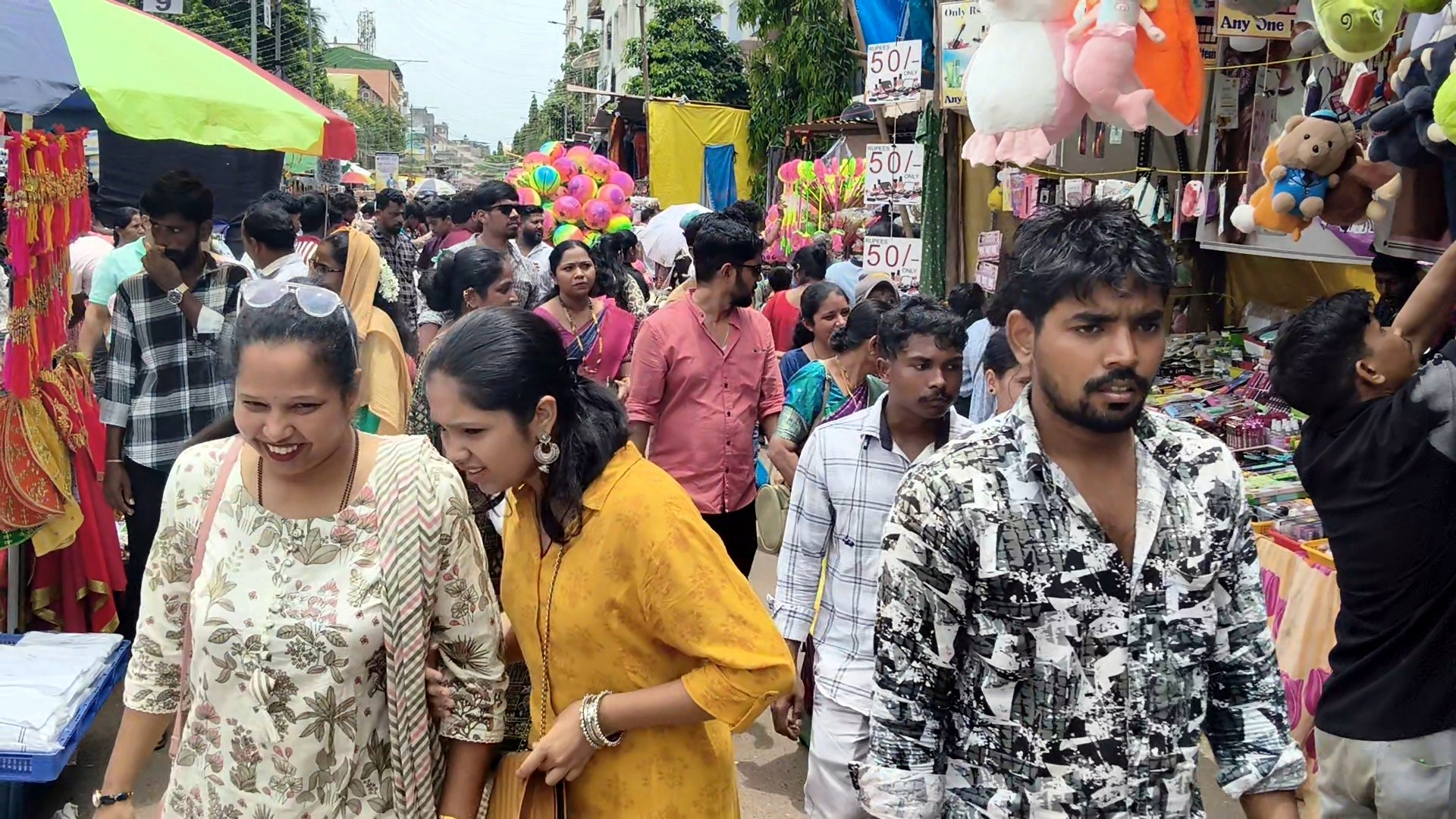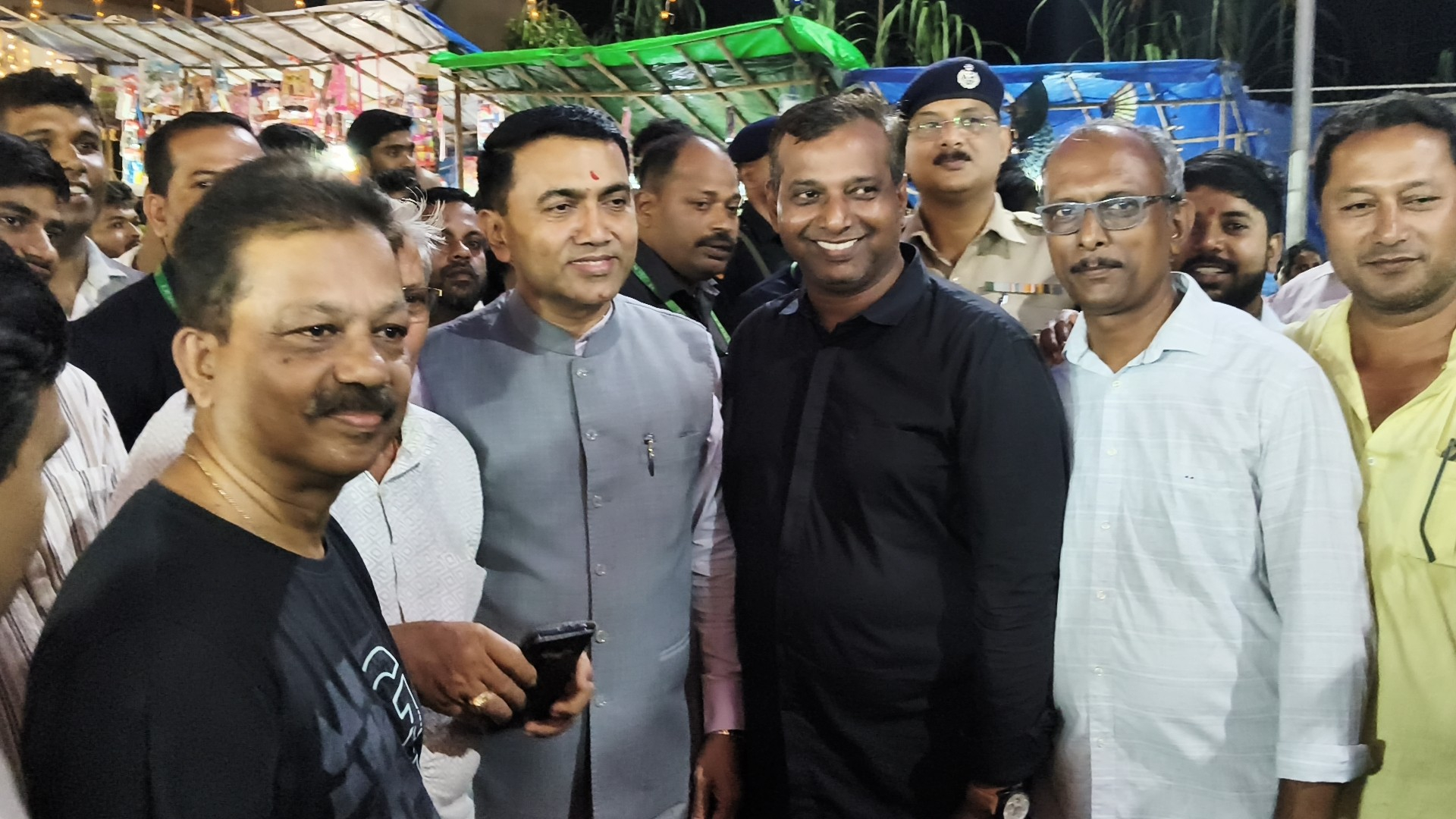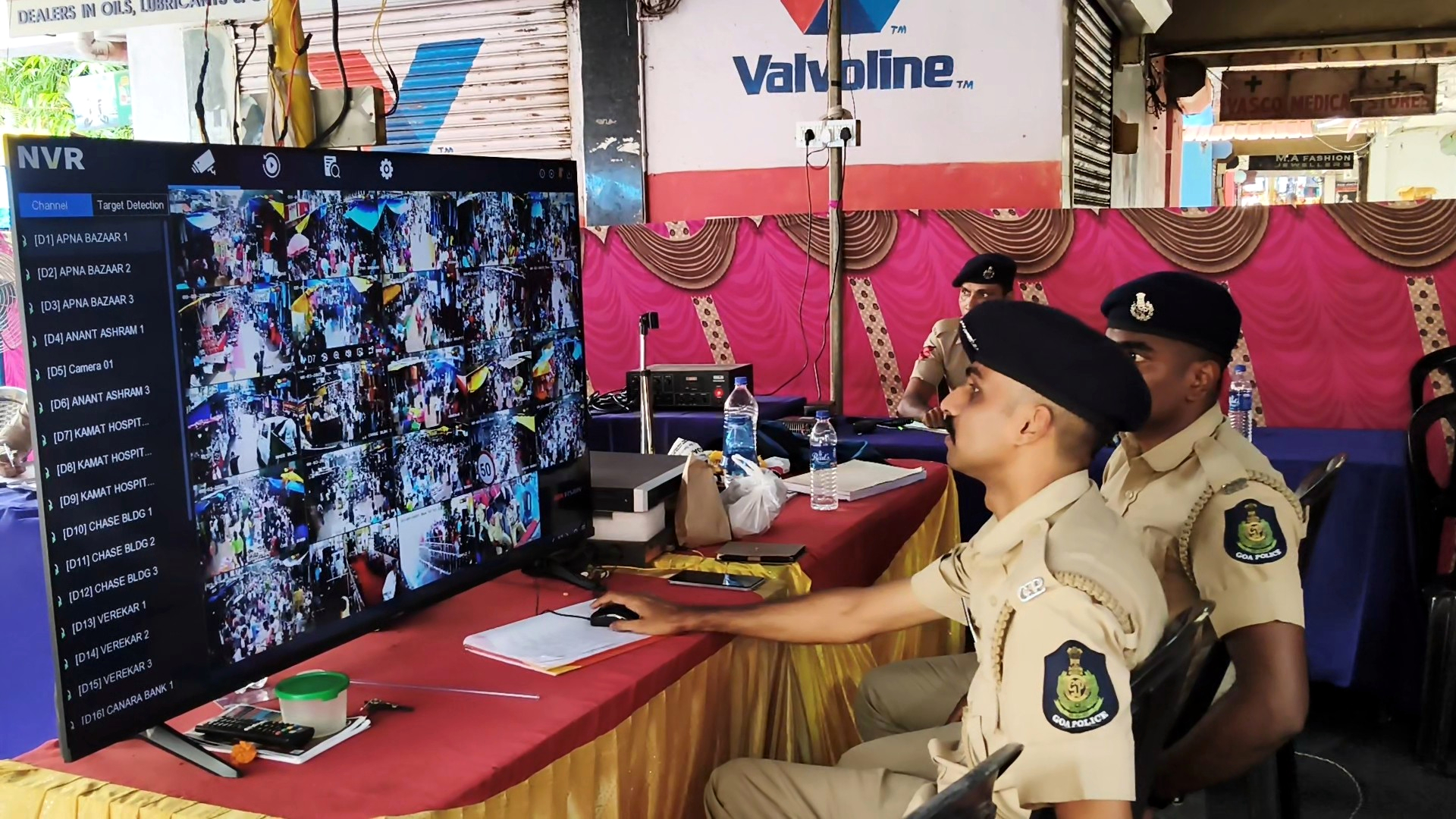
A rush of devotees at the Damodar Saptah fair on Swatantra Path.
VASCO
The 126th edition of the Shree Damodar Saptah in Vasco was not just a spiritual spectacle drawing lakhs of devotees, but a landmark in festival planning and management.
This year’s celebration stood out for its slew of first-time initiatives — some of them historic in scale and intent — that have positioned the Saptah as a model event for the rest of Goa to follow.
From multi-crore insurance coverage, reforms for traditional vendors, and digital surveillance to awareness campaigns on cybercrime and substance abuse, the Saptah demonstrated how religious and cultural events can be reimagined for modern safety, inclusivity, and efficiency.
Insurance cover
Taking lessons from past tragedies such as the Shirgao Jatra stampede, the Damodar Temple Committee made history by insuring the temple premises and its immediate surroundings for Rs 3 crore — the first time any temple in Goa has taken such a step for the safety of its devotees.
Matching this unprecedented move, the Mormugao Municipal Council (MMC) went further by insuring the entire Saptah fair for Rs 20.25 crore, becoming the first civic body in the State to provide such comprehensive coverage for a public event under its jurisdiction.
The insurance policy covered the entire stretch of Swatantra Path from Hiralal junction to National Pharmacy, and St Joseph Road from Apna Bazar to Dreamland. Additionally, a fire insurance cover of Rs 25 lakh was secured for the designated food court area, where stalls were allowed to cook and sell food items — a proactive step considering the fire hazards in crowded fairs.
Khajekars get relief, recognition

For traditional khaje vendors, popularly known as khajekars, this Saptah turned out to be particularly rewarding. Initially facing steep stall charges set by MMC at Rs 1,500 per square metre plus a Rs 1,000 sanitation fee, the khajekars protested, citing long-standing tradition and affordability.
The matter escalated into a public issue and was eventually raised during the Goa Legislative Assembly session. Following this, Chief Minister Pramod Sawant intervened and directed MMC to roll back the rates to last year’s structure — resulting in an 84% reduction in stall charges.
The relief didn’t stop there. During his visit to the Damodar Temple, the Chief Minister met the khajekars and assured them of long-term policy reforms.
Since the khajekars fall under the MSME category, Sawant announced the government’s intention to offer traditional vendors a five-year licence along with single-window clearance systems to obtain permissions from civic bodies and the FDA. This move is expected to benefit vendors not only during Saptah but across all fairs in the State, ensuring stability and dignity for small traditional businesses.
Digital surveillance, awareness drives

In another first for any fair in Goa, the Vasco Police transformed the Saptah grounds into a secure zone with digital surveillance and continuous public announcements.
A police outpost was set up near the temple, with a large monitor displaying real-time feeds from high-definition CCTV cameras installed at all major locations within the fair. Watch towers were erected every 50 metres to enable round-the-clock human surveillance, complementing the tech-driven setup. The public announcement system — introduced for the first time — helped in broadcasting real-time alerts, safety instructions, and even missing persons’ reports.
Taking the opportunity to educate the public, the police also launched a week-long cybercrime and drug abuse awareness campaign. Twenty roll-up standees highlighting cyber safety and substance abuse messages were placed across key locations.
In addition, over 10,000 A5-sized flyers were distributed with the help of Cyber Yodha volunteers from Vasco Sub-Division — one side addressing cybercrime threats and the other warning against drug abuse.
Police officials confirmed that these awareness materials would not be limited to the Saptah but would be reused in future public events and festivals across Vasco, ensuring sustained outreach and public education.
Railway Police tighten security
With the growing number of migrants arriving in Goa during festivals, the Vasco Railway Police intensified security at the railway station throughout the Saptah week.
Teams led by PSIs and head constables conducted ID verifications and baggage checks of passengers alighting from trains. The objective was to intercept any illegal substances or explosives being brought into the city during the high-footfall period.
New template for festivals
What stood out most in this year’s Saptah was the sheer scale and coordination between various stakeholders — the temple committee, municipal council, police, State government, and the local community. The festival has now emerged as a model for other religious and cultural events in Goa.
By prioritising safety, inclusivity, digital innovation, and vendor welfare, the 126th Damodar Saptah did more than honour tradition — it redefined it. The Saptah has left more than just spiritual memories — it has left behind a blueprint for the future of public celebrations in Goa.